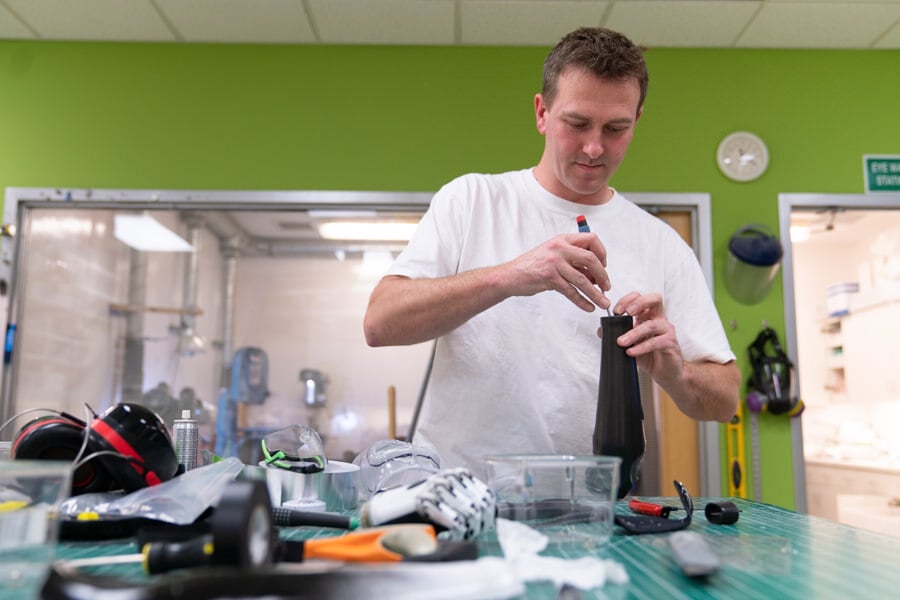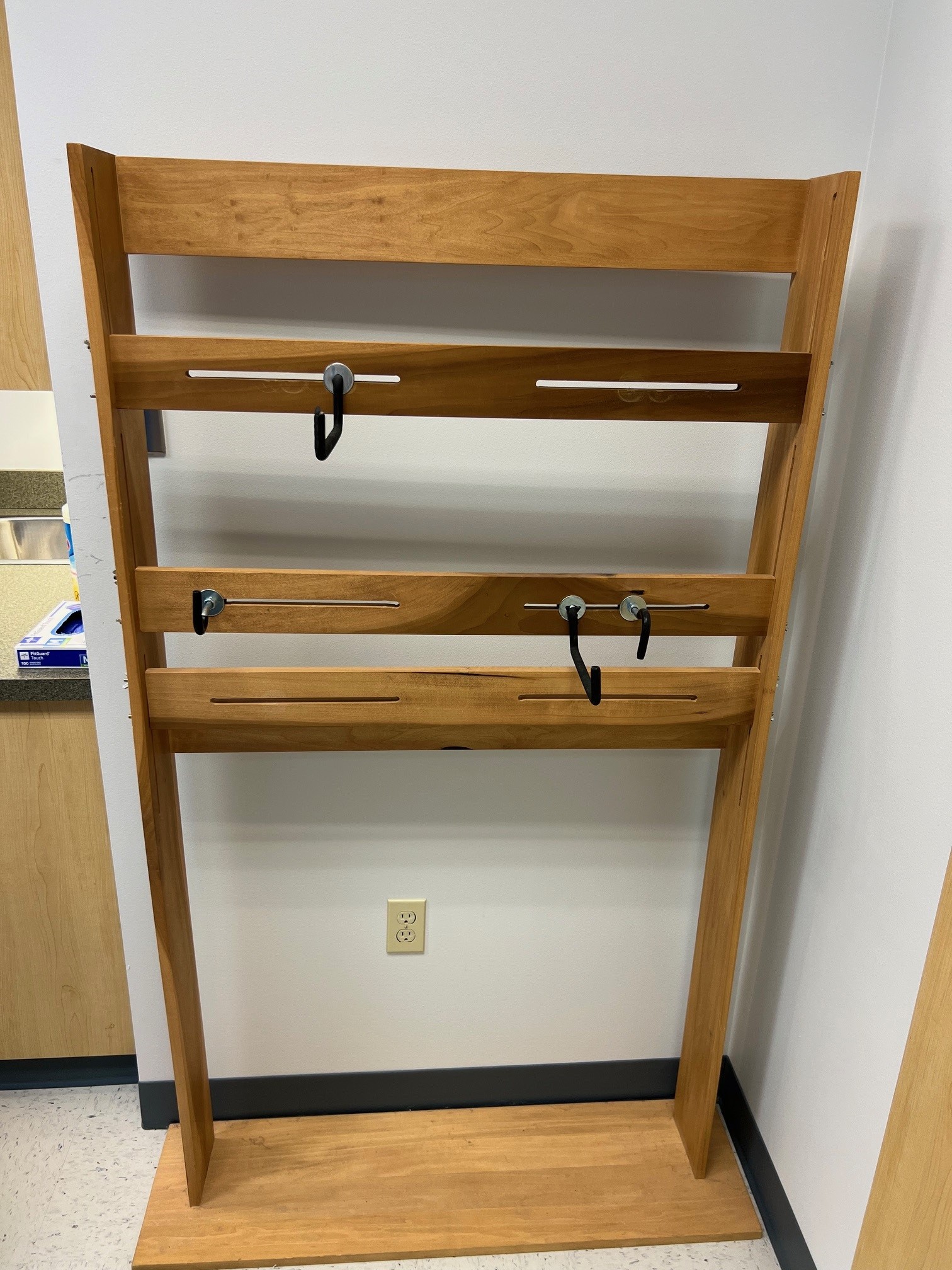Those who have bought a house or gotten married know that during the process, one learns many vocabulary words that are specific to the subject. The journey of receiving a prosthesis is similar. You are plunged into a world of “doffing” and “donning,” of “transradial” vs. “transhumeral.”
Below is a quick guide to many of the words you may encounter during the process of getting your prosthetic device, with links to each subject where we have a corresponding blog article or webpage:
Prosthetist: A medical professional who has been trained to fit prosthetic devices (generally limbs). Learn more.
Occupational Therapist: A healthcare professional that specializes in using scientific bases and a holistic approach to help a patient fulfill their daily routines and reach their rehabilitation goals. In our Arm Dynamics centers, occupational therapists are called clinical therapy specialists. Learn more.
Technician: At our Arm Dynamics centers, the prosthetist and the therapist are involved in the fitting and training of your prosthetic device, but our technicians are the ones that do much of the work of fabricating your custom prosthesis including the socket. Learn more.
Don (donning): The process of putting your prosthetic device on. “I need to don my prosthesis so we can leave the house.” Learn more.
Doff (doffing): The process of taking your prosthetic device off. “It’s late — it’s time for me to doff my prosthesis, clean it, and go to bed.” Learn more.
Partial Hand: The descriptor for an amputation or limb difference where someone is missing their fingers, thumb and/or part of their palm. Learn more.
Disarticulation: The descriptor for an amputation or limb difference that happens at the separation of two bones at their joint. This can happen at the wrist, elbow or shoulder level. Learn more.
Transradial: The descriptor for an amputation or limb difference that is below the elbow (but above the wrist). Learn more.
Transhumeral: The descriptor for an amputation or limb difference that is above the elbow (but below the shoulder level). Learn more.
Myoelectric Prosthesis: These devices use sensors that pick up electrical signals generated by muscles in the residual limb to control the movements of the prosthesis. This prosthesis has motors and battery systems on-board as well as programmable micro-computers. Learn more.
Body-Powered Prosthesis: These devices are controlled mechanically by motions made by the residual limb or the upper body which is harnessed to control movements within the prosthesis like an elbow or the terminal device. This prosthesis has no motors or batteries. Learn more.
Passive Prosthesis: These prostheses sometimes have components that require positioning by either the environment (pushing against an object) or the sound hand. They can be designed in a wide spectrum to look very natural or some fingers be very rugged in nature for heavy duty use and look nothing like a natural finger. Sometimes these devices have movable joints built within them to add function. Learn more.
Activity-Specific: As the name suggests, these devices are designed to help you engage in activities that other prosthetic options would not work for. This is a very creative category where the team works together to help you achieve special goals. It can be work related or recreation or task oriented. Learn more.
Initial Prosthesis: At our Arm Dynamics centers, we use this term to describe the first step in our expedited fitting process. We will build a device that you will quickly be able to utilize and engage in therapy. This initial device is used to work out the design of the prosthesis before permanent materials are used.
Definitive Prosthesis: Also known as the prosthesis you go home with. At our Arm Dynamics centers, definitive describes the final step in fabricating your custom device. It is based on the design that we create in the initial prosthesis described above. Here you have many options for finishing materials which can truly make this your unique custom device.
Residual Limb: Part of a limb could be missing either by amputation or by congenital limb difference. The part of a patient’s limb that is still there is called the residual limb. Daily care for one's residual limb is important.
Socket: The “interface” between the residual limb and the prosthesis — that is, the piece that holds it on your limb. This is the most important part of the prosthesis as it determines the level of comfort and control. Learn more.
Silicone: A flexible and advanced type of material that our Arm Dynamics prosthetists and technicians use to make most of our sockets. Silicone provides an intimate, cushioning, more comfortable socket that helps increase wear-time and improves control of a prosthesis. Learn more.
Frame: The part of the prosthesis that provides the strength, structure and look of your prosthetic device. This is usually laminated and can be skin tone or customized to suit your preference.
Dressing Trees: A dressing tree, seen below is a term that indicates a system of hooks and pegs that can help people with an upper limb difference, usually those with a bilateral limb difference, put on and take off, or don and doff, their prostheses without the help of others. Learn more.
Neuromas: The overgrowth on the end of a nerve as a result of an amputation of the nerve. These can sometimes cause pain but there are procedures that can be done by specialized surgeons to minimize these from forming or treat them after they have formed. Learn more.
Phantom Limb Pain: Pain that is felt in the part of the residual limb that no longer exists. Learn more.
Edema: Swelling, specifically swelling that has been caused by excess fluids trapped in your residual limb’s tissues. This is usually something that happens soon after amputation surgery but over time will go away. Socket changes early in the fitting process are usually necessary as the swelling decreases in the first months after initial fittings.
Denial: Most everything we provide to you will require a prior authorization from the insurance company before we can proceed. Sometimes they will not issue a prior authorization, and this is called a “denial.” This doesn’t always mean “no” but can mean we may need to submit additional information.
Appeal: This is the process of asking the insurance company to reconsider their decision to deny coverage for a prosthesis. This process may include additional letters or conversations with the insurance company’s medical staff. Learn more.
Referral: Some medical procedures require that a doctor “refer” a patient to a specialist. Our Arm Dynamics centers does not require you to have a referral to have a consultation with us.
Do you have any questions about any of the terms above, or a question about a different term you’ve come across? Please contact us. Or let us know if there’s a term we’re missing in the comments below!











%20President%20and%20Senior%20Clinical%20Director.jpg?width=600&height=600&name=John%20M.%20Miguelez%2c%20CP%2c%20FAAOP(D)%20President%20and%20Senior%20Clinical%20Director.jpg)










No Comments Yet
Let us know what you think